2.5.2.3 Comparison of Quantified Stabilization Scenarios
Based on the storylines, 76 stabilization scenarios were quantified as shown
in Table 2.6. The assessment of the post-SRES work
in this section is restricted to the analysis of CO2 emissions and
energy use in the different model runs. The detailed comparison of macroeconomic
costs of reducing CO2 emissions costs is not dealt with here: Chapter
8 addresses this aspect of stabilization.
Figure 2.13 shows the CO2 emission trajectories
of the 76 post-SRES mitigation scenarios along with the ranges of SRES and other
published scenarios. Quantifications differ with respect to the baseline scenario
including assumed storyline, the stabilization target, and the model that was
used. As shown in Figure 2.13, the post-SRES scenarios
cover a very wide range of emission trajectories, but the range is relatively
below the SRES range, and they are apparently classified into groups according
to the different stabilization targets. The figure shows the WRE late-response
scenario and WGI early-action scenario for 550ppmv stabilization to compare
with post-SRES scenarios, and it shows that the post-SRES range covers a much
wider range than that between WRE and WGI.
|
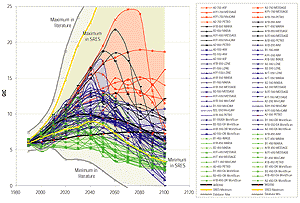
Figure 2.13: The 76 post-SRES stabilization scenarios of world
fossil fuel CO2 emissions. Different stabilization levels are
indicated by colour, with 750ppmv in red, 650ppmv in black, 550ppmv in
blue, and 450ppmv in green. For comparison, the minimum and maximum of
the ranges of scenarios from the literature (grey) and the SRES (yellow)
as well as the WRI and WRE 550ppmv stabilization scenarios (bold black)
are also shown.
|
|
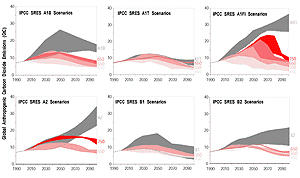
Figure 2.14: Comparison of SRES and post-SRES scenario ranges in
total global CO2 emissions. The post-SRES ranges are estimated
based on the selected scenarios quantified by SRES participants in order
to compare SRES ranges.
|
|
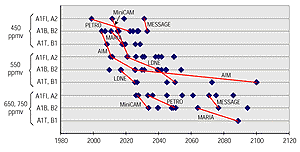
Figure 2.15: Timing when the stabilization scenarios achieve a
reduction of 20% of global energy-related CO2 baseline emissions,
compared across stabilization targets as well as baselines. Slanted lines
join scenarios quantified by the same model.
|
|
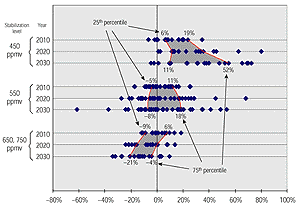
Figure 2.16: The reduction of energy-related CO2 emissions
from 1990 levels in Annex I countries for stabilization
at 450ppmv, 550ppmv, and 650–750ppmv. For each stabilization level,
emission reductions are shown for the years 2010 (upper lines), 2020 (middle
lines), and 2030 (lower lines). Shaded areas show the range between the
25th and 75th percentiles of the frequency distribution
of the scenarios.
|
|
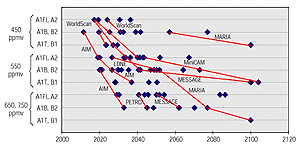
Figure 2.17: Timing of when per capita CO2 emissions
in Annex I countries would fall below per capita
CO2 emissions in non-Annex I countries, assuming that all CO2
emission reduction necessary for stabilization would occur in Annex I
countries and that non-Annex I countries would emit CO2 without
any controls.
|
|
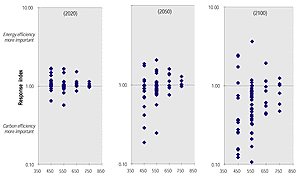
Figure 2.18: Response index to assess priority setting in energy
intensity reduction (more than 1.0) or in carbon intensity reduction (less
than 1.0) for all stabilization variants of post-SRES scenarios in 2020,
2050, and 2100.
|
|
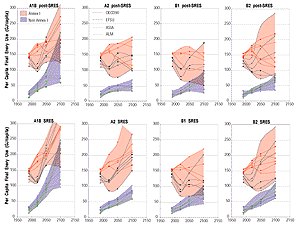
Figure 2.19: An equity index to compare per capita final energy
use (GJ/capita) between the Annex I (pink) and non-Annex I (blue) countries
for all post-SRES (550ppmv stabilization) and SRES (baseline) variants
from 1990 to 2100. Climate policy has a much smaller impact on equity
in energy use than does choice of development path. This can be seen by
comparing the change in energy use within each of the four worlds (i.e.,
between the baseline and the 550ppmv stabilization for each world) with
the change among the worlds (i.e., across the baselines or across the
550ppmv stabilization).
|
Figure 2.14 shows the comparison of SRES and post-SRES
scenario ranges in total global CO2 emissions. The post-SRES ranges
are estimated based on the selected scenarios quantified by SRES participants
in order to compare the formal SRES ranges in Nakicenovic et al. (2000). It
is shown clearly in the figure that concentration stabilization requires much
more reduction of CO2 emissions under development paths with high
emissions such as A1FI and A2 than under development paths such as B1 and B2.
These differences in reduction requirements result in selection of different
technology and/or policy measures and, as a consequence, different costs to
stabilize concentrations even at the same level. In the A1 scenario family,
with its different scenarios in technological development (A1B, A1FI, and A1T),
technological change is also a key component in bringing down the costs of mitigation
options and their contribution to the emissions reduction. The A1FI stabilization
scenarios, which are based on the highest baseline emissions, require much larger
emission reductions than the A1T stabilization scenarios. The role of technology
has been found to be crucial in the A1 scenario variants.
Morita et al. (2000a) compared all the stabilization variants in detail and
found several common characteristics among these scenarios. These findings are
as follows:
- Comparing the CO2 emissions reductions from SRES baselines,
the models have many points in common, but there are also some clear differences.
All models show an increase in CO2 reduction over time. This reflects
the strong constraint of atmospheric CO2 concentration. There is
a considerable range in reductions among models in early years. However, most
models achieve a similar proportional reduction from the baseline over the
observation period.
- For achieving stabilization at 550ppmv, the highest reductions in CO2
emissions compared to the baseline are observed in the A2 family. B1 shows
the lowest reductions. CO2 reduction at the end of the 21st
century ranges in A2 between 75% and 80%, A1B between 50% and 75%, B2 between
40% and 70%, and B1 between 5% and 40%.
- The target stabilization level also significantly affects the CO2
reduction, even when based on the same baseline scenario. In the 450ppmv stabilization
case, the reduction reaches 70% to 100%14
of A1B baseline emissions at the end of the 21st century.
- Energy consumption reductions are more complicated among models. There
is no strong relationship between the level of energy consumption and the
stabilization level.
- Different baselines lead to different macroeconomic costs in order to reach
a stabilization target. In spite of the wide range among models, A2 would
be the most expensive case while B1 would require the lowest cost for stabilization
at 550ppmv. The GDP loss in B1 would be less than one-tenth that in the A1B
case, and less than one-twentieth that in the A2 case.
- The CO2 reduction and macroeconomic costs are also significantly
affected by the target stabilization level, even when based on the same baseline
scenario. The economic cost for 450ppmv stabilization would be around three
times that for 550ppmv, and six to eight times that for 650ppmv. These relationships
can be observed at both the global and regional levels.
- Different stabilization targets also require different timing for the introduction
of reduction policies. The 450ppmv stabilization case requires drastic emission
reductions that occur earlier than under the 650ppmv case. Very rapid increases
in emission reduction over 20 to 30 years are also observed in the 450ppmv
stabilization case.
In order to compare the scenarios in further detail, several indices were calculated
for this review.
First, a CO2 reduction index was compared among stabilization levels
as well as among SRES worlds. This index is calculated by subtracting baseline
emissions from mitigation scenario emissions. In general, the lower the stabilization
level that is required, as well as the higher the level of baseline emissions
caused by the selected development path, the larger the CO2 divergence
from the baseline that is needed in all the regions. However, it does not simply
follow from the larger divergence in emissions that there is an earlier divergence
from the baseline.
The impact on the timing of emission reduction of both the stabilization level
and the baseline level of emissions is further elaborated in Figure
2.15. This figure shows when the reduction in energy-related CO2
emissions in each stabilization scenario would reach 20% of baseline emissions.
This figure indicates that more stringent stabilization targets require earlier
emission reductions from baseline levels. Higher emission worlds such as A1F1
and A2 also require earlier reduction than lower emission worlds such as A1T
and B1.
A key policy question is what kind of emission reductions would be needed in
the medium term, after the commitment period of the Kyoto Protocol (assuming
that it will be implemented). Figure 2.16 shows the percent
reduction in energy-related CO2 emissions in Annex I countries from
1990 for the various stabilization cases. Since the first commitment period
of the Kyoto Protocol ends in 2012, this can give some indication of the extent
to which emission reduction commitments after 2012 would be needed to achieve
the various stabilization levels. It should be noted that about two thirds of
the scenarios assume that developing countries have already diverged from their
baseline emission trajectories in 2020. Another point is that the post-SRES
scenarios were not developed specifically to include the Kyoto targets, so there
is a range of Annex I emission reductions (from 1990 levels) in 2010, 2020 and
2030. The mid-course scenarios are indicated in Figure 2.16
as the range between the 25th and 75th percentiles of
the frequency distribution of the scenarios.
Figure 2.16 shows that:
- In the 450ppmv stabilization scenarios, the middle range (between the 25th
and 75th percentiles) of Annex I emissions in 2010 lies between
the Kyoto target and a 19% reduction from 1990 levels. This range increases
after 2010, as does the decrease in Annex I emissions that would be needed
to achieve stabilization at 450 ppmv. The percent reduction from 1990 levels
in the middle range of scenarios is 13%–34% in 2020 and 11%–52%
in 2030;
- In the 550ppmv stabilization scenarios, the middle range of Annex I emissions
in 2010 is around the Kyoto target (from an 11% decrease to a 5% increase
from 1990 levels); in 2020, the middle range of emissions lies between a 17%
decrease and an 8% increase from 1990 levels; and in 2030, it lies between
an 18% decrease and an 8% increase from 1990 levels. The average level of
emissions slightly decreases after 2010; and
- The 650 or 750ppmv stabilization scenarios show similar changes in emission
levels in 2010 compared to 1990, and few of them show any additional reduction
in Annex I emissions after 2010. The middle range of emissions lies between
an increase of 1%–17% from 1990 levels in 2020, and an increase of 4%–21%
from 1990 levels in 2030.
This suggests that achievement of stabilization at 450ppmv will require emissions
reductions in Annex I countries by 2020 that go significantly beyond their Kyoto
Protocol commitments for 2008 to 2012.15
It also suggests that it would not be necessary to go much beyond the Kyoto
commitments for Annex I countries (assuming as indicated that developing countries
diverge from their baselines by 2020) to achieve stabilization at 550ppmv or
higher. However, it should be recognized that several scenarios do indicate
the need for significant emission reductions by 2020 in order to achieve these
stabilization levels. These findings should be interpreted in light of the facts
that CO2 concentrations are assumed to reach one of the alternative
fixed target levels in the year 2150, and unlike “emission corridor”
analyses, these scenarios do not introduce other conditions such as a constraint
on the rate of temperature increase.
Another important policy question concerns the participation of developing
countries in emission mitigation. As a first step in addressing this question,
the post-SRES scenarios were evaluated according to when per capita CO2
emissions in Annex I countries would fall below per capita emissions in non-Annex
I countries, assuming that all CO2 emission reduction necessary for
stabilization would occur in Annex I countries and that non-Annex I countries
would emit CO2 without any controls. This hypothetical assumption
permits the analysis of one of the determinants of when non-Annex I emissions
might begin to diverge from baseline levels. The results are shown in Figure
2.17 for each stabilization level and for three groups of SRES baselines.
Figure 2.17 shows that:
- Assuming that all the CO2 reductions for concentration stabilization
are undertaken in Annex I countries, most of the post-SRES scenarios indicate
that per capita Annex I emissions would fall below per capita non-Annex I
emissions in the 21st century. This situation occurs before 2050
in two-thirds of the scenarios. Only in the A1T or B1 worlds would per capita
CO2 emissions in developing countries remain below those of developed
countries in the 21st century.
- These timings are significantly affected by the time series of emission
reductions in the scenarios, and consequently they diverge in the scenarios.
However, comparison within individual models suggests that the lower the stabilization
level, the earlier that Annex I per capita emissions fall below non-Annex
I per capita emissions. Stabilization scenarios based on higher emission worlds
such as A1FI and A2 also tend to show earlier timing for Annex I to fall below
non-Annex I per capita emissions compared to scenarios based on the lower
emission worlds of B1 or A1T. This suggests that the stabilization target
and the baseline emission level are both important determinants of the timing
when developing countries’ emissions might need to diverge from their
baseline emissions.
In order to assess priority setting in energy intensity reduction or in carbon
intensity reduction, a “response index” was calculated for all stabilization
variants of post-SRES scenarios for the years 2020, 2050, and 2100, as shown
in Figure 2.18. This index relates the impact on CO2
emission reduction of switching towards low-carbon or carbon free energy to
the impact of energy intensity reduction. The response index is the ratio of
the change in carbon intensity to the change in primary energy intensity16.
When energy intensity reduction is relatively larger than carbon intensity
reduction, the index shows more than 1.0, and less than 1.0 in the opposite
case.
It is clear from Figure 2.18 that the priority of response
to reduce CO2 emissions would change over time. Energy intensity
reduction would be relatively larger than carbon intensity reduction in the
beginning of 21st century, but these would be of equal weight by
the middle of the century. The impact of energy intensity reduction would be
saturated towards the end of the 21st century, and the use of low-carbon
or carbon-free energy sources would become relatively much larger. This pattern
is generally consistent across the stabilization levels. The lower the stabilization
target, the higher the relative importance of energy intensity reduction in
the beginning of the 21st century, and the higher the relative importance
of low-carbon or carbon free energy towards the end of the 21st century.
These trends are important, but it is necessary at the same time to understand
the model assumptions behind them. Most of the models do not accommodate very
well structural and consumption-pattern-related efficiency measures (e.g., advanced
dematerialization, major structural change, and changes in consumption patterns
and lifestyles). A few cases which incorporate drastic changes in social structure
(e.g., some of the scenarios based on AIM and WorldScan) give relatively high
priority to energy efficiency improvement even in the latter half of 21st
century.
A per capita final energy index was calculated in order to analyze equity between
North and South. Since one of the weak points of quantified scenario analysis
concerns equity or “burden sharing”, the comparison of this kind of
index is very important. Even though the per capita income is the most popular
index to analyze equity, this index was not estimated by all the modelling teams.
Therefore, final energy consumption per person in each region was adopted as
an appropriate index for the equity analysis, because this index is closely
related to per capita economic welfare. Figure 2.19 shows
this index (in GJ/capita) among the OECD, EFSU, ASIA and ALM regions17
for all post-SRES and SRES variants over the period 1990 to 2100.
As shown in this figure, some interesting trends can be observed:
- In the development-emphasized worlds (A1B and A2) climate policy would
reduce per capita final energy in both the Annex I and non-Annex I countries,
while in the environment-emphasized worlds (B1 and B2) climate policy would
have little effect on energy use. These impacts would slightly improve equity
in per capita final energy use between the Annex I and non-Annex I countries,
because the reduction in energy use caused by climate policies would be larger
in Annex I than in non-Annex I.
- However, the impact of climate policies on equity in per capita final energy
use would be much smaller than that of the future development path. The differences
among the various SRES baseline conditions have the largest impact upon whether
per capita energy use values converge between Annex I and non-Annex I countries,
with the highest degree of convergence occurring in the A1B and B1 worlds.
This can be seen in Figure 2.19 by comparing the (smaller)
change in energy use between regions within each of the four columns (i.e.,
between the baseline and the 55ppmv stabilization scenario for each world)
with the (much larger) change between regions across each of the two rows
(i.e., across the baseline or across the 550ppmv stabilization scenario).
Though the analyses described above mainly focus on CO2 emissions
from energy consumption, it is also important to consider non-CO2
emissions as well as non-energy-related CO2 emissions. However, very
few scenarios that include these emissions have been quantified and therefore
it was not possible to include this additional review in this report. Some of
the nine modelling approaches used here do include other radiatively active
gases. However, the mitigation and/or stabilization scenarios include explicit
limitations only on CO2 emissions, and hence the reductions in other
gases are indirect results (or ancillary benefits) of the CO2 reduction
measures.






